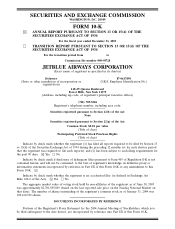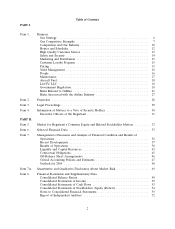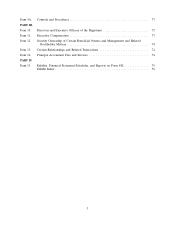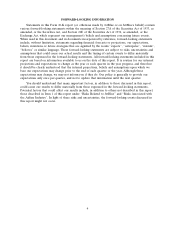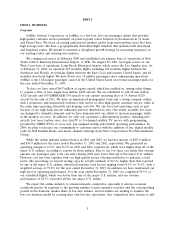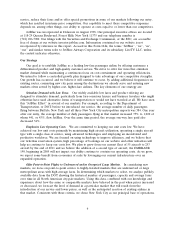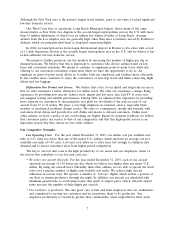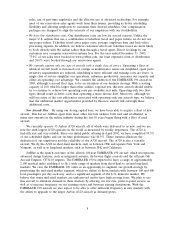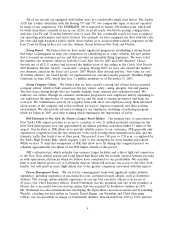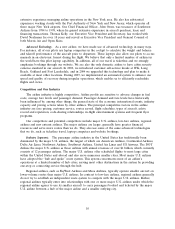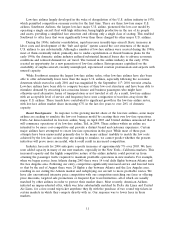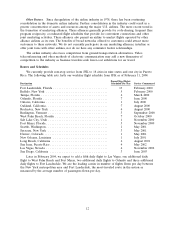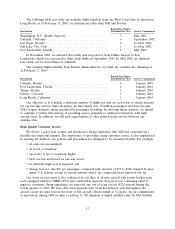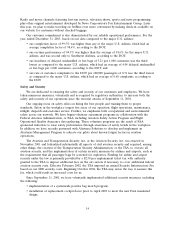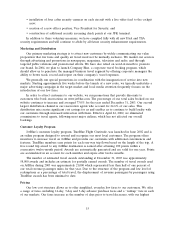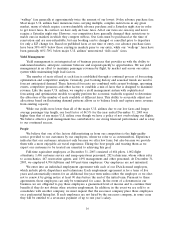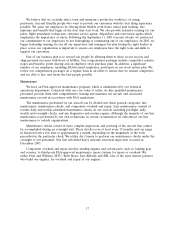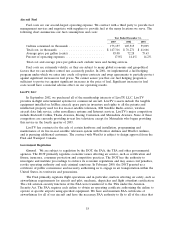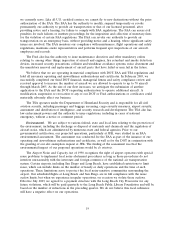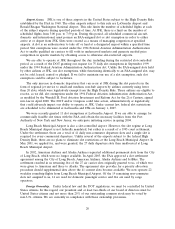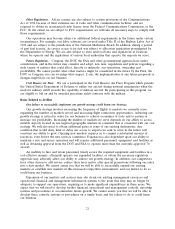JetBlue Airlines 2003 Annual Report Download - page 14
Download and view the complete annual report
Please find page 14 of the 2003 JetBlue Airlines annual report below. You can navigate through the pages in the report by either clicking on the pages listed below, or by using the keyword search tool below to find specific information within the annual report.Low-fare airlines largely developed in the wake of deregulation of the U.S. airline industry in 1978,
which permitted competition on many routes for the first time. There are three low-fare major U.S.
airlines. Southwest Airlines, the largest low-fare major U.S. airline, pioneered the low-cost model by
operating a single aircraft fleet with high utilization, being highly productive in the use of its people
and assets, providing a simplified fare structure and offering only a single class of seating. This enabled
Southwest to offer fares that were significantly lower than those charged by other major U.S. airlines.
During the 1980s, industry consolidation, rapid increases in multi-type aircraft fleets, increases in
labor costs and development of the ‘‘hub and spoke’’ system caused the cost structures of the major
U.S. airlines to rise substantially. Although a number of low-fare airlines were created during the 1980s,
most of them eventually failed, primarily due to under-capitalization or flawed business plans. In the
early 1990s, the domestic airline industry suffered substantial financial losses due to adverse economic
conditions and reduced demand for air travel. The turmoil in the airline industry in the early 1990s
created an opportunity for a new generation of low-fare airlines. Entrepreneurs capitalized on the
availability of surplus aircraft, recently unemployed, experienced aviation professionals and airports with
unused capacity.
While Southwest remains the largest low-fare airline today, other low-fare airlines have also been
able to offer substantially lower fares than the major U.S. airlines, especially following the economic
downturn which started in early 2001 and was magnified by the September 11th, 2001 terrorist attacks.
Low-fare airlines have been able to compete because of their low-cost structures and have been able to
stimulate demand by attracting fare-conscious leisure and business passengers who might have
otherwise used alternative forms of transportation or not traveled at all. As a result, low-fare airlines
with an acceptable level of service and frequency have seen a migration of travelers away from the
major U.S. airlines. These trends have contributed to significant growth in the low-fare airline sector,
with low-fare airline market share increasing 67% in the last five years to over 20% of domestic
capacity.
Recent Developments. In response to the growing market share of the low-fare airlines, some major
airlines are seeking to emulate the low-cost business model by creating their own low-fare operations.
Delta Air Lines launched its low-fare airline, Song, in April 2003 and United Airlines announced that it
will commence operations of its low-fare airline, Ted, in 2004. These airlines within an airline are
intended to be more cost-competitive and provide a distinct brand and customer experience. Certain
major airlines have attempted to create low-fare operations in the past. While most of these past
attempts have been unsuccessful primarily due to the major airlines’ inability to match the low costs
achieved by the low-fare carriers they are seeking to emulate, we cannot predict whether the present
initiatives will prove more successful, which could result in increased competition.
Industry forecasts for 2004 anticipate capacity increases of approximately 7% over 2003. We have
seen added capacity in many of our new markets, especially in the New York—California markets. This
increased capacity and the highly competitive nature of the airline industry could prevent us from
attaining the passenger traffic required to maintain profitable operations in new markets. For example,
when we began service from Atlanta during 2003 there were 14 total daily flights between Atlanta and
the Los Angeles area. Following our entry, competitors significantly increased service and lowered fares
so that by the end of August there were 24 flights a day between Atlanta and the Los Angeles area,
resulting in our exiting the Atlanta market and redeploying our aircraft to more profitable routes. We
have also encountered intensive price competition with our competitors matching our fares or offering
price discounts, targeted sale promotions or frequent flyer travel initiatives, all of which are usually
matched by other airlines in order to protect their market share. Most recently, American Airlines
initiated an unprecedented offer, which was later substantially matched by Delta Air Lines and United
Air Lines, for a free round trip ticket anywhere they fly with the purchase of two round trip tickets in
certain markets in which they compete directly with us. Our response was to lower fares in these
markets.
11


